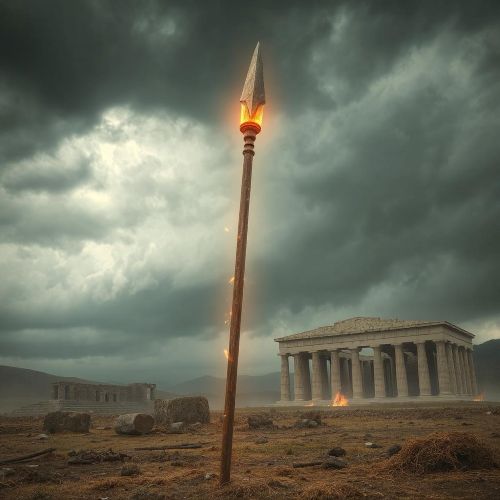Exploring Norse Mythology: Unveiling the Names of Viking Goddesses
The Vikings, seafaring warriors of the early medieval period, have left an indelible mark on history. Their incredible exploits, fearsome battles, and fascinating culture have captivated the imagination of people for centuries. Inextricably linked with their history is Norse mythology, a rich tapestry of gods, goddesses, and mythical creatures. In this blog, we will embark on a journey through the realms of Norse mythology to uncover the names of Viking goddesses and explore their significance in the Viking worldview.
- Freyja – The Fertility and Love Goddess
Let’s begin our exploration with one of the most prominent Viking goddesses, Freyja. She is known as the goddess of love, beauty, and fertility. Freyja’s name is derived from the Old Norse word “fro,” meaning “lady” or “mistress,” indicating her high status among the gods.
Freyja is often associated with love and sensuality, and she’s also seen as a protector of women during childbirth. Cats were sacred to Freyja, and she had a chariot pulled by two large felines. Her connection to these animals symbolized her independence and assertiveness, qualities highly regarded in Viking society.
- Frigg – The Queen of the Aesir
Frigg, the wife of Odin, is often referred to as the queen of the Aesir, the principal group of Norse gods. Her name is associated with the Old Norse word “frith,” meaning “beloved” or “dear.” Frigg is considered the goddess of marriage, motherhood, and the home.
She is known for her wisdom and foreknowledge, often keeping secrets and confidences. Frigg’s influence extends beyond her familial duties, as she also possesses a deep connection with the natural world and the weaving of fate.
Idun, often spelled as Iðunn in Old Norse, is a goddess closely associated with youth and rejuvenation. Her name is believed to be derived from the word “id,” meaning “again” or “renew.” Idun is responsible for guarding the golden apples that sustain the youthfulness of the gods.
In Norse mythology, the gods must regularly partake in these apples to maintain their eternal vitality. Her role as the guardian of youth underscores the importance of life, vitality, and the enduring cycle of nature in Viking culture.
- Skadi – The Goddess of Winter and the Hunt
Skadi, sometimes spelled as Skáði, is a fierce and independent goddess associated with winter, skiing, and the hunt. Her name is thought to come from the Old Norse word “skadd,” meaning “harm” or “damage.” Skadi is often depicted with her bow and arrows, embodying the spirit of the hunt.
Skadi’s story is unique as she was married to the god Njord but later divorced him due to the incompatibility of their preferred landscapes. She is a symbol of the harsh winter and the challenges of the northern wilderness.
- Hel – The Ruler of the Underworld
Hel, also known as Hela, is a powerful and enigmatic figure in Norse mythology. Her name likely derives from the Old Norse word “hel,” meaning “hidden” or “concealed.” Hel is the ruler of the realm of the dead, often referred to simply as Hel.
She is the daughter of Loki and dwells in a place where the souls of the deceased go after death. Hel’s role is to judge and determine the fate of the souls that enter her domain, highlighting the Norse preoccupation with the afterlife.
- Sif – The Goddess of Fertility and Harvest
Sif is a goddess associated with fertility, agriculture, and the harvest. Her name may be derived from the Old Norse word “sif,” meaning “bride” or “affinity.” Sif is known for her lustrous golden hair, which symbolizes the ripened grain in the fields.
She is married to Thor, the god of thunder, and together they embody the dynamic relationship between fertility and storms, essential for ensuring bountiful harvests in Viking culture.
- Eir – The Goddess of Healing
Eir, whose name means “mercy” or “help,” is a lesser-known goddess of Norse mythology. She is revered as the goddess of healing and medicine, embodying the importance of health and well-being in Viking society.
Eir’s presence reminds us of the Viking’s practical approach to life and their reliance on the knowledge of herbal medicine and healing arts.
Conclusion
The names of Viking goddesses offer a glimpse into the complex and multifaceted belief system of the Norse people. These powerful female figures embody a range of attributes, from love and fertility to wisdom and the afterlife. Their significance in Viking culture cannot be overstated, as they played vital roles in shaping the worldview of these seafaring warriors.
As we explore the names of Viking goddesses like Freyja, Frigg, Idun, Skadi, Hel, Sif, and Eir, we gain a deeper understanding of the values and beliefs that were central to the Viking way of life. These goddesses continue to captivate our imaginations and remind us of the rich and enduring legacy of Norse mythology in the modern world.






